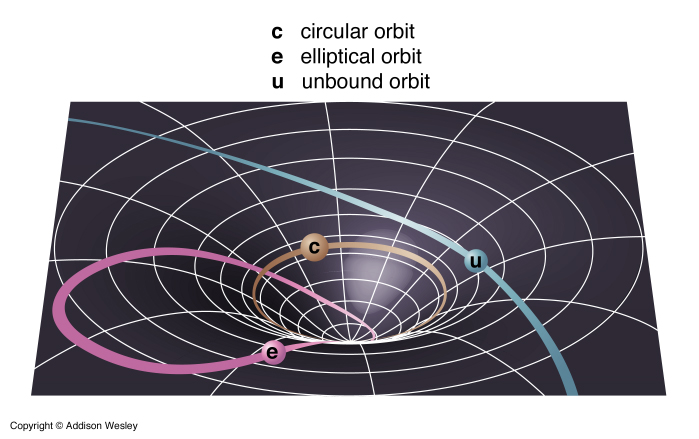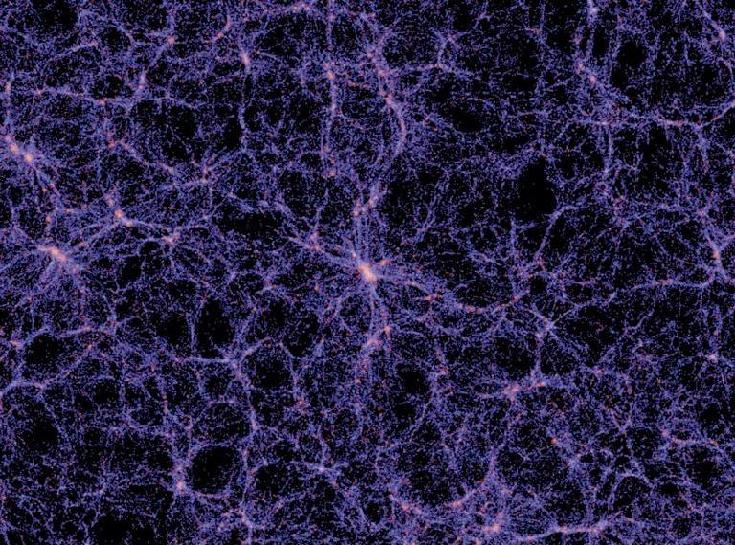Page 1 of 1
APOD: Hickson 44 in Leo (2011 Aug 29)
Posted: Mon Aug 29, 2011 4:06 am
by APOD Robot
 Hickson 44 in Leo
Explanation:
Hickson 44 in Leo
Explanation: Scanning the skies for galaxies, Canadian astronomer Paul Hickson and colleagues identified some 100 compact
groups of galaxies, now appropriately called
Hickson Compact Groups. The four prominent galaxies seen in this intriguing
telescopic skyscape are one such group, Hickson 44, about 100 million light-years distant toward the constellation Leo. The two spiral galaxies in the center of the image are edge-on NGC 3190 with its distinctive, warped dust lanes, and S-shaped NGC 3187. Along with the bright elliptical, NGC 3193 at the right, they are also known as Arp 316. The spiral in the upper left corner is NGC 3185, the 4th member of the Hickson group. Like other galaxies in Hickson groups, these show signs of distortion and
enhanced star formation, evidence of a gravitational tug of war that will eventually result in
galaxy mergers on a cosmic timescale. The merger process is now understood to be a normal part of the evolution of galaxies, including
our own Milky Way. For scale,
NGC 3190 is about 75,000 light-years across at the estimated distance of Hickson 44.
[/b]
Re: APOD: Hickson 44 in Leo (2011 Aug 29)
Posted: Mon Aug 29, 2011 4:51 am
by Ann
This is a great APOD. Interacting galaxies are very fascinating, and the NGC 3190 group - or, Hickson 44 - is a beautiful group.
I have to question the claim that Hickson 44 shows much evidence of enhanced star formation. One of the galaxies in the group does show enhanced star formation, and that is, of course, S-shaped NGC 3187. However, spiral galaxy NGC 3185 at the upper left is relatively poor in recent star formation, even though it has a large intermediate population. You can see in today's APOD that NGC 3185 does not look nearly as blue as NGC 3187.
As for NGC 3190, it has very little star formation. Few spiral galaxies are as poor in hot young stars as NGC 3190. To get an idea of how many - or how few - young stars it has got, take a look at
this page. Great amateur Robert Gendler has processed a Hubble Space Telescope image of NGC 3190. If you look at the largest version of the picture, you will be able to see small clusters and relatively faint associations of blue stars. But all in all, there are very few of them.
But to summarize, this is a great and beautiful APOD! Tomorrow's APOD is supposedly going to be "very cool", but let me say that today's APOD is very cool, too!

Ann
Re: APOD: Hickson 44 in Leo (2011 Aug 29)
Posted: Mon Aug 29, 2011 6:05 am
by bystander
Re: APOD: Hickson 44 in Leo (2011 Aug 29)
Posted: Mon Aug 29, 2011 11:58 am
by orin stepanek
100 groups; that's a bunch of galaxies and is only a scratch on the surface.
http://www.deep-sky.co.uk/observing/gal ... cklist.htm 
Re: APOD: Hickson 44 in Leo (2011 Aug 29)
Posted: Mon Aug 29, 2011 3:11 pm
by nstahl
This is a great APOD! Kudos.
And with the benefit of time travel (or maybe just editing) I see this post will make me a science officer. Woohoo!
Re: APOD: Hickson 44 in Leo (2011 Aug 29)
Posted: Mon Aug 29, 2011 3:24 pm
by bystander
Ann wrote:As for NGC 3190, it has very little star formation. Few spiral galaxies as as poor in hot young stars as NGC 3190. To get an idea of how many - or how few - young stars it has got, take a look at
this page. Great amateur Robert Gendler has processed a Hubble Space Telescope image of NGC 3190. If you look at the largest version of the picture, you will be able to see small clusters and relatively faint associations of blue stars. But all in all, there are very few of them.
APOD: Spiral Galaxy NGC 3190 Almost Sideways (2010 May 03)
http://asterisk.apod.com/viewtopic.php?f=9&t=19266
Re: APOD: Hickson 44 in Leo (2011 Aug 29)
Posted: Mon Aug 29, 2011 5:27 pm
by Wolf Kotenberg
Just imagine life without a really good telescope. You'd have to go to the beach to see heavenly bodies.....couldn't resist the opening
Re: APOD: Hickson 44 in Leo (2011 Aug 29)
Posted: Tue Aug 30, 2011 1:56 am
by geckzilla
That's only just slightly not as bad as the time I made a Uranus joke here...

Re: APOD: Hickson 44 in Leo (2011 Aug 29)
Posted: Tue Aug 30, 2011 3:11 am
by saturn2
Group of galaxies.
Hickson Compact Group 44, distance from Earth 100 million ligth-years.
Why are the galaxies in groups?
Re: APOD: Hickson 44 in Leo (2011 Aug 29)
Posted: Tue Aug 30, 2011 3:43 am
by Ann
saturn2 wrote:Group of galaxies.
Hickson Compact Group 44, distance from Earth 100 million ligth-years.
Why are the galaxies in groups?
I only have time for a short answer. Galaxies are in groups because of their mutual attraction through the force of gravity.

Image by cse.ssl.berkeley.edu
Of course, Einstein told us that gravity is not a "force", but that mass deforms spacetime, and that objects moving in spacetime choose the shortest route. Galaxies are so massive that they strongly deform spacetime around them, and if another galaxy happens to pass by, it may be caught in the "gravitaional hole" of the first galaxy and be unable to get away. Of course, the second galaxy will deform spacetime, too, binding the two objects even more closely together.
The tendency of matter to form lumps and "chains" through their mutual attraction means that the overall structure of the universe looks something like this. As for the voids, it could be that they are mainly produced by dark energy, the mysterious repulsive force that seems to permeate the universe.
In the picture at right, the bright central condensation represents an unusually massive cluster of galaxies.
Ann
Re: APOD: Hickson 44 in Leo (2011 Aug 29)
Posted: Tue Aug 30, 2011 2:18 pm
by chrisobr
To my untrained eye, it seems that NGC 3190 and NGC 3187 are a much smaller distance apart than we are from our nearest galactic neighbour, and I wonder what the view of the night sky would be like from a planet located in one of the two galaxies. I assume that the adjacent galaxy would fill much of the sky, and it must be truly awe-inspiring. I also wonder what conditions would be like on such a planet. Would "tidal" forces between the two galaxies make for some strange effects we don't experience here on Earth (our closest galaxy neighbours being so relatively far away)?
Re: APOD: Hickson 44 in Leo (2011 Aug 29)
Posted: Tue Aug 30, 2011 2:36 pm
by Chris Peterson
chrisobr wrote:To my untrained eye, it seems that NGC 3190 and NGC 3187 are a much smaller distance apart than we are from our nearest galactic neighbour...
They may be- certainly the tidal distortion would suggest so. But it is impossible to tell from our single vantage point what the actual distance is, since the radial distance isn't clear. The galaxies could be a few million light years apart along our line of sight, and we'd have no way of determining this.
...and I wonder what the view of the night sky would be like from a planet located in one of the two galaxies. I assume that the adjacent galaxy would fill much of the sky, and it must be truly awe-inspiring.
Our own galaxy fills much of our night sky. It's called the Milky Way, and is certainly impressive. If there were another galaxy merging with ours, it would look like a second band or zone of light, with the same brightness as the Milky Way. So in reality, I don't think the sky would be qualitatively much different than our own.
I also wonder what conditions would be like on such a planet. Would "tidal" forces between the two galaxies make for some strange effects we don't experience here on Earth (our closest galaxy neighbours being so relatively far away)?
For most locations in the galaxy, there would be no effect at the solar system scale. However, if a dense region were passing through, where stars were less than a light year apart, the tidal forces would probably make planetary systems unstable. So any life on planets in such an area would probably be destroyed, as those planets shifted to radically different orbits or were ejected completely from their stellar systems.
Re: APOD: Hickson 44 in Leo (2011 Aug 29)
Posted: Tue Aug 30, 2011 4:18 pm
by chrisobr
Thanks, Chris. As you likely guessed, my eye really is untrained, but fascinated!

Re: APOD: Hickson 44 in Leo (2011 Aug 29)
Posted: Tue Aug 30, 2011 4:27 pm
by Chris Peterson
chrisobr wrote:Thanks, Chris. As you likely guessed, my eye really is untrained, but fascinated! :)
No matter how trained the eye, there's simply no reliable way to tell how far apart a pair of gravitationally bound galaxies are to one another in the radial direction. Because they are gravitationally bound, they have the same cosmological redshift. So any observed redshift is Doppler, but that's not enough to conclusively determine the characteristics of how the galaxies are orbiting each other (since the plane of the orbit is not known). So there remains a huge uncertainty in the actual distance between the pair. Nobody has figured out an observational fix to this problem, yet.
Re: APOD: Hickson 44 in Leo (2011 Aug 29)
Posted: Thu Sep 01, 2011 5:40 pm
by Scotch7
I love big hi-rez pix of galaxies, alone, colliding, or in clusters. So thank you for Hickson-44.
Following the links I found a lot of images of Hickson clusters, but none as big and hi-rez as a normal daily APOD presentation.
Guess I have to ask you guys for more big beautiful images of Hickson clusters. Sooner rather than later please
 Hickson 44 in Leo
Hickson 44 in Leo
